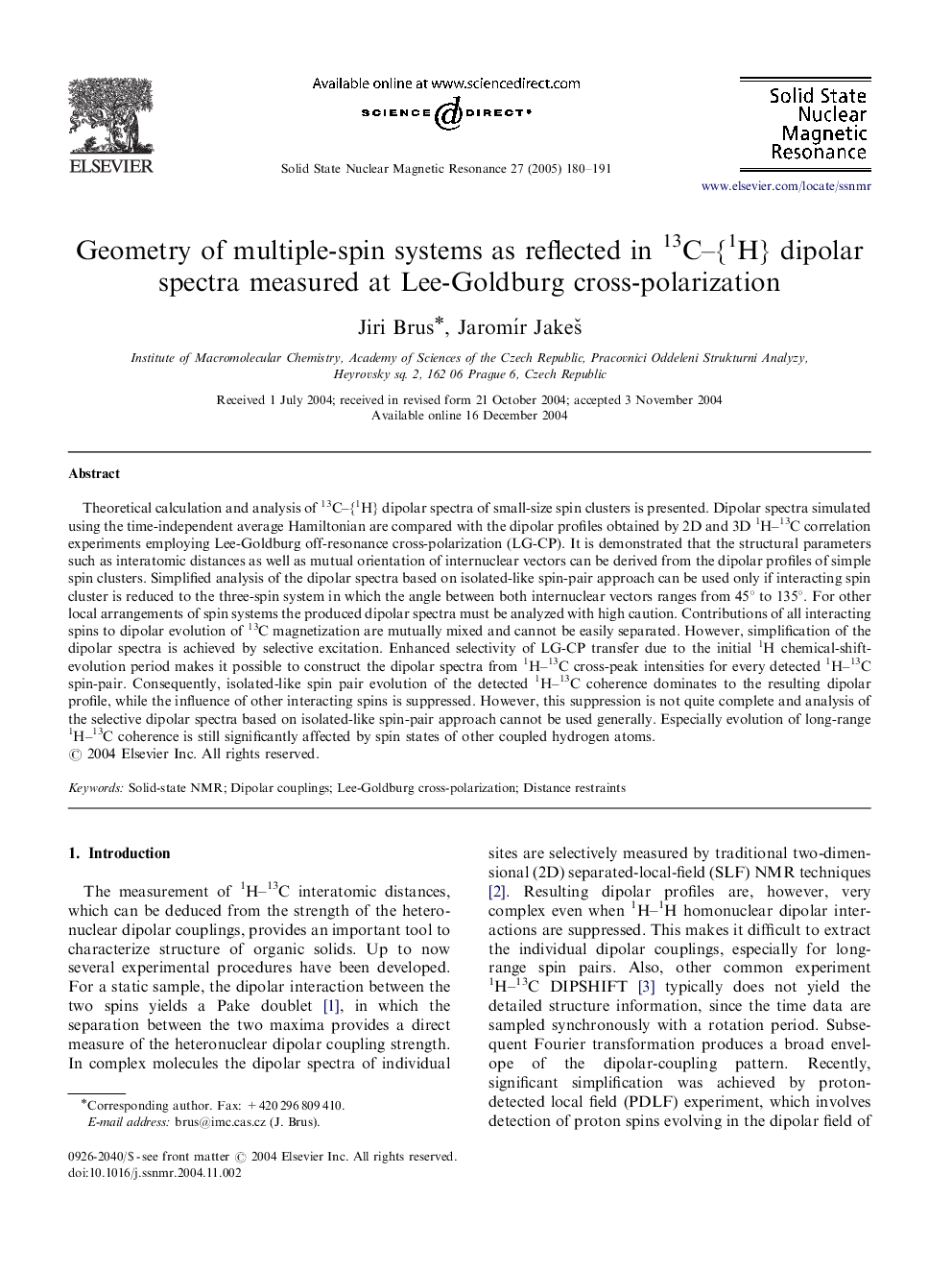| Article ID | Journal | Published Year | Pages | File Type |
|---|---|---|---|---|
| 9594300 | Solid State Nuclear Magnetic Resonance | 2005 | 12 Pages |
Abstract
Theoretical calculation and analysis of 13C-{1H} dipolar spectra of small-size spin clusters is presented. Dipolar spectra simulated using the time-independent average Hamiltonian are compared with the dipolar profiles obtained by 2D and 3D 1H-13C correlation experiments employing Lee-Goldburg off-resonance cross-polarization (LG-CP). It is demonstrated that the structural parameters such as interatomic distances as well as mutual orientation of internuclear vectors can be derived from the dipolar profiles of simple spin clusters. Simplified analysis of the dipolar spectra based on isolated-like spin-pair approach can be used only if interacting spin cluster is reduced to the three-spin system in which the angle between both internuclear vectors ranges from 45° to 135°. For other local arrangements of spin systems the produced dipolar spectra must be analyzed with high caution. Contributions of all interacting spins to dipolar evolution of 13C magnetization are mutually mixed and cannot be easily separated. However, simplification of the dipolar spectra is achieved by selective excitation. Enhanced selectivity of LG-CP transfer due to the initial 1H chemical-shift-evolution period makes it possible to construct the dipolar spectra from 1H-13C cross-peak intensities for every detected 1H-13C spin-pair. Consequently, isolated-like spin pair evolution of the detected 1H-13C coherence dominates to the resulting dipolar profile, while the influence of other interacting spins is suppressed. However, this suppression is not quite complete and analysis of the selective dipolar spectra based on isolated-like spin-pair approach cannot be used generally. Especially evolution of long-range 1H-13C coherence is still significantly affected by spin states of other coupled hydrogen atoms.
Related Topics
Physical Sciences and Engineering
Chemistry
Physical and Theoretical Chemistry
Authors
Jiri Brus, JaromÃr JakeÅ¡,
